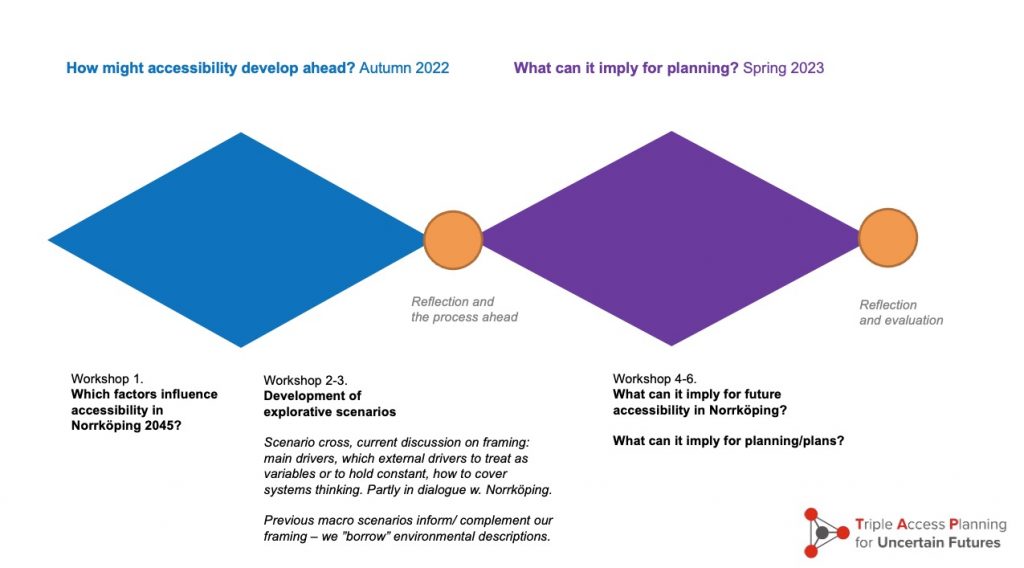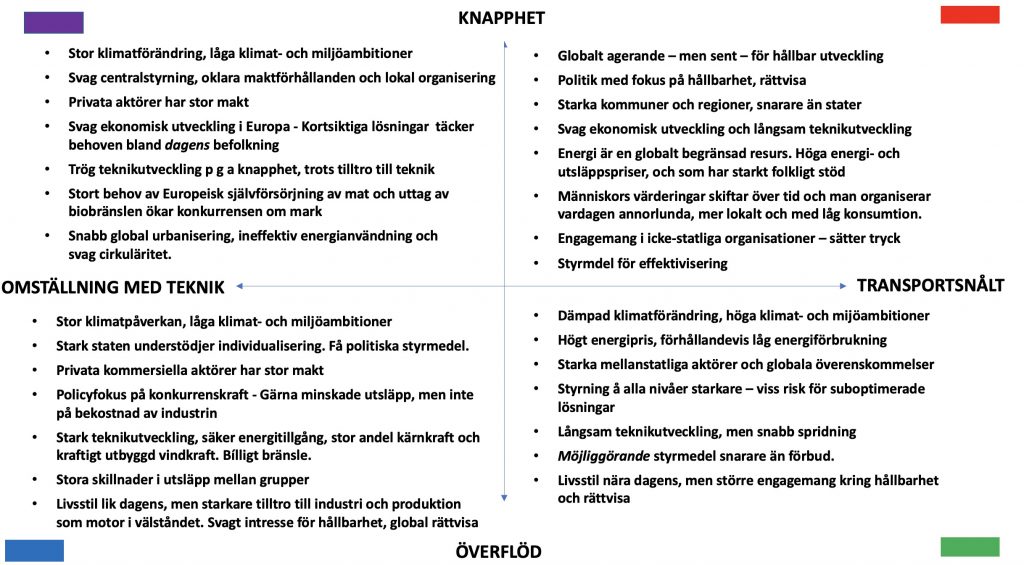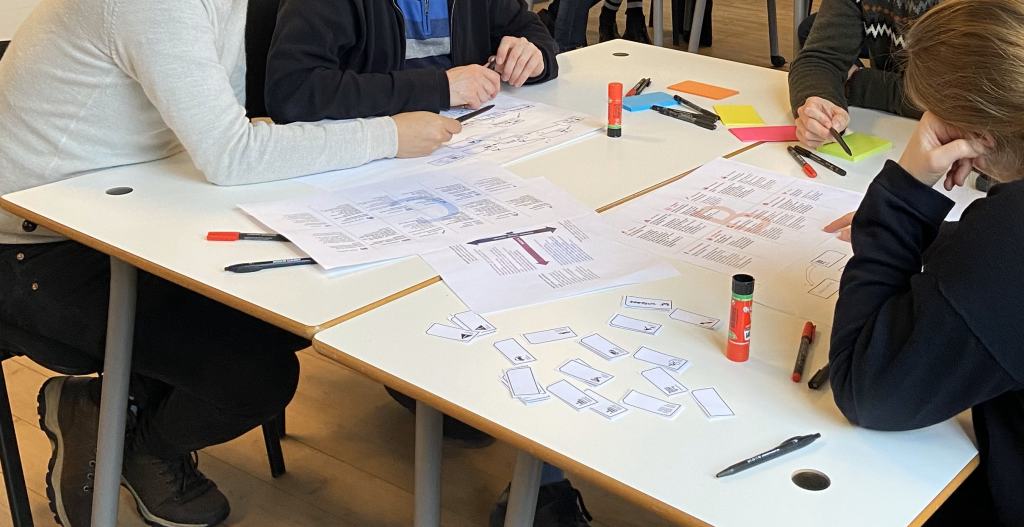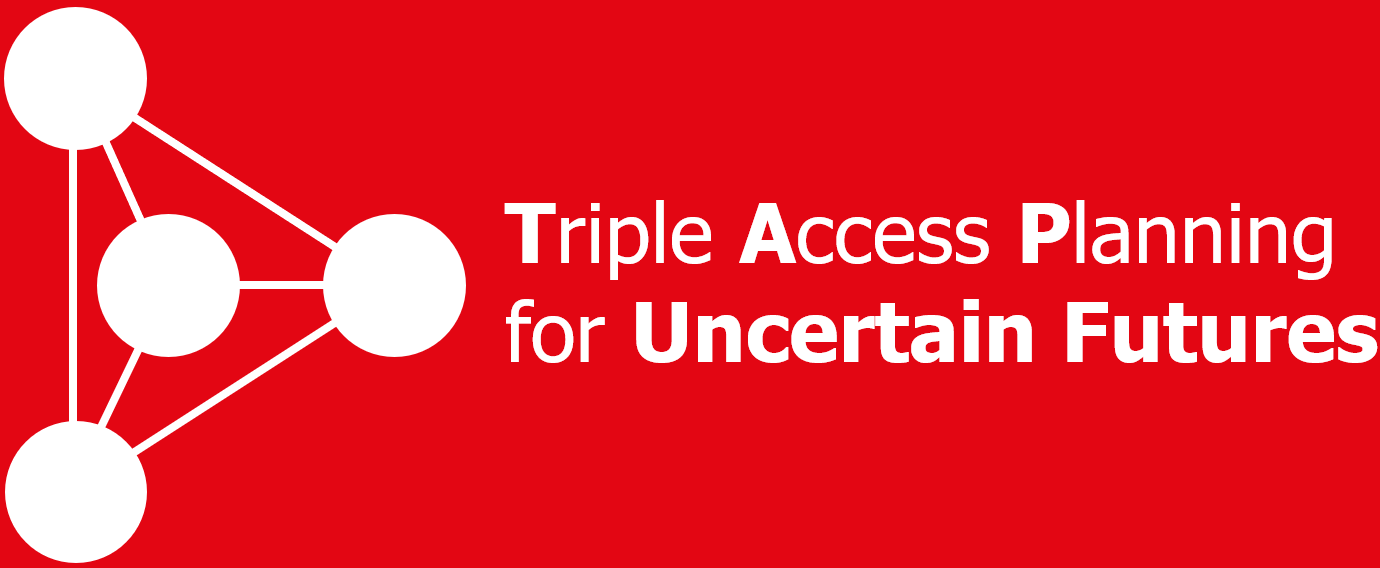Jonas Bylund, Tony Svensson and Jacob Witzell, KTH Royal Institute of Technology
In the Swedish part of the Triple Access Planning for Uncertain Futures Project explores ways to inject triple access planning (TAP) into urban and regional (transport and comprehensive) planning by way of co-creative scenario development workshops with planning practitioners.
The Swedish set of workshops turns out to be an experiment in its own right. It is experimental since it makes us of an approach similar to a living lab co-design action to investigate how explorative and normative scenario development can be used to integrate TAP principles. The assumption – or the test! – is that TAP to support Sustainable Urban Mobility Planning (SUMP) and uncertainty considerations therein can be integrated in planning practice by way of a shadow-planning practice where researchers and civil servants in (relevant) public administrations work together to develop the scenarios and the approach.
Shadow planning in this case means we are using real plans and strategies in a sandbox environment. In effect, then, we are using the shadow planning exercise as a living lab where the substantial content and active ingredients – i.e. problems, issues, concerns, trajectories, considerations, questions and reflections on what are realistic developments, what makes sense, what strains the imagination, what are causes and what are effects, what are macro and what are local variables, etc. – are mainly developed by the local expert-practitioners and problem-owners.
For instance, factors such as climate change, national policy, municipal remits, technological developments, and so on are open at the outset and collectively determined and relatively stabilized during the run of the successive workshops. It is hence genuinely challenge-driven in a transdisciplinary approach with an aim towards capacity building (cf. Bylund et al. 2022; JPI Urban Europe).
The lab setting
During autumn 2022 the work commenced with the City of Norrköping planners from comprehensive-strategic and transport divisions as well as a strategic transport planner from the Region Östergötland (regional authorities in the Swedish public administrative system are responsible for e.g. public transport as well as the coordination of public health services).
What we now call The Norrköping Scenarios has been developed in the series of workshops under the banner of explorative scenarios where uncertain and external future development factors are taken into account. The workshop exercises relied heavily on co-design of scenario content and joint reflections based on the results produced from the exercises. Even the process plan for the workshops itself was co-designed with the municipal officials.
We used a double-diamond approach (tweaked from the Design Council) to plan the workshops (see Figure 1) in order to, in the first phase explore and open up possible future lines and landscapes, then prune it down to a set of scenarios to be used for normative reflection and strategic lessons in the second phase.

Figure 1: The double-diamond approach to scenario development using the Design Council template, source: KTH TAP Project; Design Council 2005/2019.
The opening up phase during autumn of 2022 was particularly aimed at shaking loose presupposed or taken-for-granted lines of imagining possible near- and longer-term futures. In order for the scenario development to afford as much of the actors’ realism as possible while at the same time provoking or teasing out un-foreseen developments or impacts.
The scenarios are primed to grasp and highlight factors and variables, events and processes for the development of TAS in the municipality, including urban, peri-urban and rural areas, until/at 2045 with the overarching question ‘How will accessibility develop in Norrköping?’
The explorative scenarios, then, were developed using a scenario cross as a tool to capture and articulate contrasting scenes: the vertical axis in the cross notes degree of resources availability – scarcity at the top and abundance at the bottom; the horizontal axis moves from the left-hand side with a high degree of technological innovation with status-quo/retained everyday lifestyles (i.e. ecological modernization) and a small interest for planning control, to the right hand side with ahigh degree of transport efficient and sustainable structures and lifestyles and an overall big interest in planning control (see Figure 2).

Figure 2: The four scenario macro-conditions, in Swedish, source: KTH TAP Project.
The choice of these two main dimensions in the scenario cross was made after an initial mapping of external ‘macro-variables’ and variables that concern aspects of the triple access system, and an estimation of the level of uncertainty and local importance for each variable. The degree of resource availability and degree of technological innovation were deemed as the variables most uncertain and the most important regarding their local influence.
On towards normative scenarios
Now, early 2023, we are closing down the first diamond. So far, three half-day workshops has been organized with participants form Norrköping municipality´s planning office and one representative from the Regional Administration (see Figure 3). Together we have developed and elaborated the four scenarios based on the produced results from the three first workshops. We are at the moment teasing out their accessibility characteristics.

Figure 3: Planners exploring TAP in scenario development, photo: Jonas Bylund.
Two more explorative workshops are planned to develop the resulting four explorative scenarios. At the these workshops we plan to first work with causal relationships between factors in each quadrant of the scenario cross (a kind of simplified CLD-exercise focusing on one causal chain at a time, rather than the whole system) to help participants identify synergies and other relationships between variables, under the specific circumstances for each scenario.
At the last of the explorative workshops, qualitative narratives for each scenario will be drafted. After which, in the spring 2023, we will workshop how the scenarios are useful to stress-test the current SUM and comprehensive planning strategies and visions.
